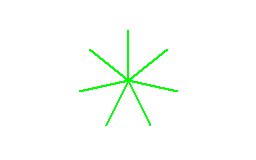Touchable Ink, from Samsung, the ink for braille
Giuseppe Di Grande Updated the 05/05/2017 00:00
It's called Touchable Ink, it's Samsung's ink for printing in Braille with a regular laser printer. The news isn't very recent, as it dates back to September 2016, but it deserves some attention. Could this ink be a substitute for traditional expensive Braille?
There are approximately 270 million people worldwide with severe vision problems, of which 40 million are totally blind. Braille is used by a small fraction of blind individuals, for cultural situations and due to production costs.
For example, Braille printers have a prohibitive cost for those who would like to use them for domestic purposes: spending around 3000 euros for a minimally decent printer is not affordable for everyone. Fortunately, in Italy, the National Health Service provides Braille printers on loan, but one must choose wisely to avoid ending up with a poorly functional device.
Samsung has created a special ink that can be used with the normal cartridges of common laser printers. This evolution from Samsung is very interesting news that could truly innovate the way Braille is printed, significantly lowering its costs and making Braille accessible to everyone.
A few years ago, while speaking with a priest who ran an institute for blind children in Thailand, he told me about the difficulty of producing Braille due to printer costs. Perhaps Samsung aimed to solve exactly this issue when, together with the Thai Association for the Blind and a chemistry professor from Thammasat University, they sought new solutions for printing Braille on paper.
Samsung has invented Touchable Ink, a special ink that can be used with common laser printers. Instead of lowering the costs of Hardware, the Korean company focused on the material common to all printers: ink. Of course, it's a special ink that will cost slightly more than regular ink, but it will allow for raised Braille using common Hardware and paper.
A sheet printed with ink remains smooth to the touch. After printing with Touchable Ink, Samsung shows that to raise the special ink, the sheet must be subjected to a heat source, such as an oven or a hairdryer: this creates points and lines perceptible to touch.
For now, Touchable Ink is still a project in development, but it has already proven its validity so much so that it won the Grand Prix for Design, Healthcare, and Innovation at Spikes Asia 2016.
I have been involved in Braille and embossed printing for years, having developed Biblos, which is Software for producing Braille prints and tactile graphics. I cannot refrain from making some unbiased and impartial considerations about this Samsung innovation.
Certainly, Touchable Ink could be a real revolution for schools, as the Italian education system suffers from a lack of funds to purchase products for creating Braille and tactile graphics. While news about this special ink has focused on Braille, personally, I see enormous potential for its use in creating disposable tactile graphics and drawings.
To achieve a raised surface, the sheet printed with Touchable Ink needs a heat source capable of triggering the necessary chemical reactions to emboss the ink printed on paper. Typically, those printing in Braille do not limit themselves to printing one or a few pages, partly because Braille takes up more space than standard print characters. It is not conceivable that every time someone prints, they must be forced to put the sheets under a hairdryer or in an oven. Certainly, everything is possible when saving 3000 euros, but for those printing ten, twenty, fifty sheets, it would become very inconvenient in the long run. One sheet is more than fine, two sheets as well, but three sheets already start to be bothersome. For this reason, I believe that such ink may be more useful for printing tactile drawings rather than Braille. Unless a printer is produced in the future that can already heat the sheet to emboss the inked parts.
Having not touched sheets printed with Touchable Ink, I do not have sufficient data to consider the thickness of the raised lines. One of the questions I have is: will the thickness be sufficient to be perceived by the touch of anyone?
I believe that Touchable Ink could find excellent use in the educational field, especially for printing tactile drawings and graphics. Biblos is already capable of printing both Braille and tactile graphics in this manner, and when Samsung releases this product, we will be able to immediately try printing in relief using a regular laser printer.
Years ago, a Biblos customer asked me if they could print Braille with a regular printer. I took the question lightly, as Braille could only be printed using specific Hardware. I apologize to that user, who predicted the ink that Samsung has produced today and is about to distribute, ten years in advance.
For further support you can subscribe the Biblos Group on Facebook.
